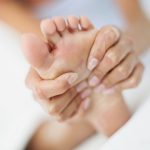Dr Sumit Archik discusses the importance of good bone health
Good bone health
Bones are crucial as they support our vital organs like brain, heart, lungs and kidneys from injury. Our bones store minerals such as calcium and phosphorous and release them into the body as and when needed.
They provide structure to our body anchoring our muscles. Bones change constantly as new bones are made and the older bones are broken down. When you are young, your body is able to replace bones at a fast rate and your body mass also increases. People achieve peak bone mass around age 30. After that the bone remodelling process slows down and you start losing more bone mass than you gain, unless you take action to prevent it. It is vital to take care of your bones as this may prevent the onset of osteoporosis. This makes having healthy bones instrumental to our health and longevity.
What affects bone health?
A number of factors can affect bone health. These factors result in diminished bone density, early bone loss and an increased risk of fractures.
- A diet low in calcium
- Physical
- Regular tobacco and alcohol use
- Gender, size and age – (Women are at more risk than men. Also, thin people with body mass index lower than 19 are at a greater risk especially as they age)
- Race and family history- (Increased risk of osteoporosis for people with Caucasian or Asian descent. A parent or sibling who has osteoporosis increases your risk)
- Hormone levels – (Too much thyroid hormone, or low estrogen levels in women increase risk. In men, low testosterone levels can cause a loss of bone mass)
- Eating disorders and other conditions (Anorexia or bulimia increase risk. Stomach surgery (gastrectomy), weight- loss surgery also increase risk as they affect your body’s ability to absorb calcium)
- Certain medications
Bone health and Diabetes
Observational studies show that there is decreased bone density in people who predominantly have Type 2 Diabetes. Bone loss occurs when more bone is resorbed than is formed by the body. (Bone resorption is a continuously occurring process involving the breakdown of bone by specialized cells and then the broken-down bone is replaced by new bone growth) After age 30, bone resorption slowly begins to exceed new bone formation. This leads to bone loss.
Studies have shown that people with Type 2 Diabetes taking insulin had a greater risk than people taking oral agents of bone loss. Insulin has anabolic effects on bone and increases the bone resorption rate resulting in a faster rate of bone break down than bone reforming. This is also a factor resulting in bone loss. Studies also suggest that a reduced rate of bone formation occurs in both forms of Diabetes during
periods of poor blood sugar (glycaemic) control.
There is an increased risk of low bone mineral density and bone fractures in people with Diabetes. The magnitude of risk of increased bone loss and abnormal bone density is higher for Type 1 Diabetes as studies show that people who have early Type 1 Diabetes do not achieve peak bone mass. People with Type 1 Diabetes often go through hypoglycaemia frequently and also display substantial insulin deficiency and metabolic acidosis from an early age when peak bone mass is determined. For people with Type 2 Diabetes where onset of Diabetes is usually later in life, the peak bone mineral density is usually greater
Nutrition and bone health
Eating a well-balanced diet rich in calcium and vitamin D is paramount to good bone health. Natural sources of calcium include tofu (calcium fortified), soy milk (calcium fortified), green leafy vegetables (e.g., broccoli, brussels sprouts, mustard greens, kale), chinese cabbage or bok choy, beans/legumes, orange juice (calcium fortified), nuts/almonds and dairy products (e.g., milk, cheese, yogurt).
It is also important to walk in the morning sun between 9 -11 am for twenty minutes as sun light is the natural source of Vitamin D.
Obesity and bone health
Abdominal fat (which is more dangerous than fat found in other places in the body) has a more negative impact on bone and muscle strength and can boost inflammation. Researchers at Florida State University have coined the phrase ‘osteosarcopenic obesity’. This occurs due
|
to deteriorating bone density and muscle mass associated with obesity. They have found that obese people have a greater risk of falling and breaking bones.
Obesity is a double-edged sword. Obesity increases bone mass in hip region but may not in other parts like spine and fore arm so there is some bone protection around the hip but not the spine. Although body mass has a positive effect on bone formation, whether the mass derived from obesity is beneficial to bone remains a topic of further study.
Menopause, osteoporosis and bone health
Menopause, a natural, biological process, is the cessation of the monthly menstrual cycle marking an end to fertility. It is defined as occurring 12 months after your last menstrual cycle and can occur in your 40s or 50s.
50 per cent of post menopausal Indian women (above 50 yrs of age) do not achieve peak bone mass resulting in the high rate of osteoporosis. Both men and women can get osteoporosis, but women get it more often because of the changes in
hormones. Osteoporosis causes bones to become weak and brittle. Osteoporosis- related fractures most commonly occur in the hip, wrist or spine. The amount of bone mass attained till the age of 30 and the amount lost after then determines the age of possibly developing osteoporosis. The higher your peak bone mass was (more bone you have “in the bank”) lowers your risk to develop osteoporosis as you age.
Medication, a healthy diet and weight bearing exercises are recommended to prevent bone loss and strengthen already weak bones. Good physical activity, a diet which includes green vegetables and high calcium is important. Lifestyle modification forms fundamental corner stone in tackling both conditions together. 90-100 mg one to two glasses of undiluted, low-fat milk must be consumed every day. Studies have shown that the Indian population consumes less than 400 mg of dietary calcium every day. One or two tablet of calcium carbonate which contains about 500 mg of calcium must be consumed.
Calcium intake
There are many preparations of calcium available such as calcium citrate, calcium acetate, calcium magnate, calcium glucamate. Commonly available is calcium carbonate which is a cost-effective preparation. Calcium carbonate is preferably to be taken in night with dinner so it is better absorbed.
To conclude
Women with Diabetes need to pay special attention to the prevention of osteoporosis by maintaining an adequate calcium and vitamin D intake. It is important to eat a healthy diet and introduce some form of physical activity in daily life.
Dr Sumit Archik is Endocrinologist in Jaipur














